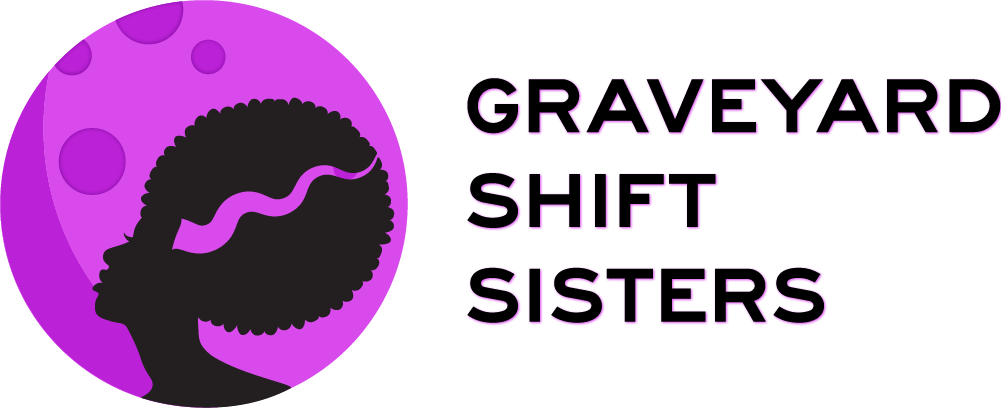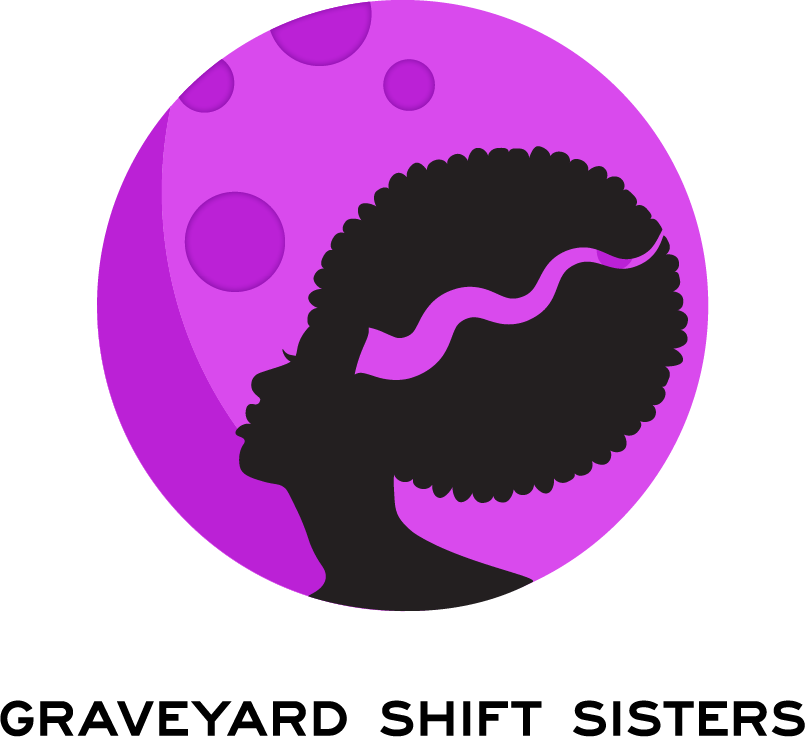Black & Native Women Horror Writers: Interview With Rebecca Roanhorse
It takes something significant for me to add a book to my already enormous to-read list. I make a point to do my best to read stories by and about marginalized people, as in the scope of publishing, we are still woefully underrepresented. One of the books I heard about during my travels on social media featured a Native woman monster hunter, and I knew I wanted to read it. The author Rebecca Roanhorse also had a short story (“Welcome to Your Authentic Indian Experience™” - linked to later in this article) published online at Apex Magazine that was nominated for several awards. After I devoured the Apex story, I joined Edelweiss, a site that provides advanced reading copies from publishers to bloggers and reviewers in order to read her upcoming novel Trail of Lightning.
Maggie Hoskie is a Dinétah monster hunter, a supernaturally gifted killer. When a small town needs help finding a missing girl, Maggie is their last best hope. But what Maggie uncovers about the monster is much more terrifying than anything she could imagine.
Maggie, a tense, terse, and a challenging character to get to know as she doesn’t care much for people. She’s also powerful and a necessary part of the community that she lives on the outskirts of. When she taps into her clan powers, which always seem to be simmering just below her surface, she is force of nature. Early on, Maggie performs acts of physical and mental strength that let me know I was in for an engrossing ride. Modern weapons, unlawful lawmen, clan powers, tricksters, and more than a few monsters, made this a book I tore through.
For some, Maggie might be tough to love – she’s not interested in being friendly or nice, and she balks at the implication she needs help from anyone. (Even when she clearly does.) But I saw the thin veneer of fragility she tries to hide and I recognized her need to protect herself. As the book progresses, the reasons for Maggie’s challenging persona emerge, revealing deep pain and loss behind her rage. For me, Maggie felt like a real person – sometimes you love them, sometimes they get under your skin, other times you respect their choices, even though you don’t agree them – and that’s what I want from characters. Even with the support of friends/associates, Maggie is the first to throw herself into the fray. Her journey to discover the source of the monsters and the reason for their kills is at once thrilling, harrowing, and thoroughly enjoyable.
I reached out to Rebecca to ask for an interview and she graciously accepted. Read on to find out about her acclaimed short story, her upcoming release Trail of Lightning, and her thoughts on some of the cultural similarities those of Native and Black American ancestry share.
Thank you for granting me this interview. Tell us a bit about yourself and your writing style.
Hi all. My name is Rebecca Roanhorse and I’m a speculative fiction writer of Ohkay Owingeh and Black American ancestry. I’ve written a short story that has gotten some good feedback and a couple of awards nods, and I have a handful of books coming out over the next few years, the most immediately one being Trail Of Lightning, which kicks off The Sixth World series.
First off, congratulations! Your short story “Welcome to Your Authentic Indian Experience(TM)” won a Nebula award! On top of all that, it was voted Apex Magazine’s Reader Favorite Short Story of 2017. Does this recognition from popular reader vote feel different from being selected by an awards committee?
Thank you! Since you sent me these questions, it’s also picked up a Sturgeon and Locus nomination, which I feel like really are two ends of the reader spectrum. I honestly am blown away by both kinds of recognition. I write pretty commercial fiction, so I am thrilled that my work is hitting its mark and appealing to a wide variety of readers. But every author wants to be acknowledged for their craft too, so those nominations make the hard work feel like it means something. I am grateful all-around.
“Welcome” was also translated into Vietnamese by Bao La for a science fiction magazine. Why do you think it resonates with so many?
As of now, the story will also be translated into Simplified Chinese, Romanian and Italian. It’s wild, more than I ever thought to dream. When this story works for people (and it doesn’t always work – I have a few reviews where people just didn’t get it or didn’t like it), I think it’s because they’ve been in the shoes of the protagonist. They know what it’s like the struggle with identity and performative identity, they know what appropriation feels like to the point of erasure, they know what it is to trust and be betrayed. My story speaks to the specificity of the Native experience, but it is an experience marginalized communities all share in various ways.
On to your upcoming release Trail of Lightning, which I had the lucky opportunity to get an ARC of. Your main character Maggie Hoskie is a supernaturally gifted hunter, who kills monsters for a price. She’s also surly, broken, and angry, yet deeply desirous of connection to someone. Why do we sympathize with her so much?
Interestingly enough, not every reader sympathizes with Maggie. I’ve read a few reviews that said she took some getting used to and that the reviewer read on despite not liking Maggie. Which is fair. Maggie doesn’t like herself very much at the beginning of the book. But I think she speaks to the humanity in all of us, especially women-identified folks who have been in these dark places in our lives, fighting our own monsters. I find her incredibly sympathetic, but then, I wrote her. But I get why she disturbs people. I just hope they give her a chance.
On Twitter, you commented that you were so happy with the cover for Trail of Lightning (Rightfully so, it’s gorgeous.) specifically because of how Maggie and Kai are represented – two Native characters, no feathers in sight! What input did you have on the cover design?
Most traditionally published authors get very little input on their covers. That’s why you should never blame an author if the cover doesn’t speak to you. It’s likely not their fault. Writing this book and being very aware of how little representation Natives get in SFF (or any popular culture), I really pressed to have input on the cover. My agent agreed and we pushed for that in the contract. Thankfully, I found the right editor for the book and he wanted my input, as did the amazing artist, Tommy Arnold, and the art director, Nick Sciacca. They led the way, but they worked hard to include me and get it right.
What do you love most about The Sixth World, the setting for Trail of Lightning?
I love that I was able to create a fantasy world and make it Native, and not in a primitive tribes vs. civilization way, as is the common way to integrate Native cultures into fantasy, but in a contemporary way. I wanted to capture some of the magic of the Navajo Nation but that magic for me is in the relationships and the people, in the survival and love and language and land. I wanted to show my characters at their best and their worst and avoid the simplified stereotypes, so hopefully I did that. I’m sure I’ll hear an earful if I didn’t.
Maggie’s powers come from the traditional Diné way of identifying, via clan. These clan powers are astounding in their intensity, but take their toll on Maggie physically. What, if anything, does this say about our innate connection to our ancestors?
Oh, now isn’t that an excellent question. Thank you. I wanted to create a magic system that was uniquely Diné and spoke to both the trauma of our current existence as Natives and the strength that comes from our ties to the past. In one scene, Maggie and Kai (her medicine man partner) have a conversation about whether anything good can come from suffering, and whether the powers they can tap into, those that represent their ancestors and gods, are a blessing or a curse. I’m not going to answer that directly, but it’s part of the story I’m trying to tell.
As a person of Ohkay Owingeh and African American ancestry, what cultural similarities exist in both groups, if any?
There are so many similarities between the cultures, like the emphasis on family and community. Respect for our ancestors and passing down their stories to our children. Powerful, amazing women who raise up and support one another. And most importantly, a love of food. I can hit a BBQ or a Feast Day with equal gusto. Being in an inbetween place is not without its confusion, misunderstandings and hardships, but honestly, I feel lucky to be who I am.
Are there subjects you consider taboo when writing?
If I am writing Native characters and settings, even when fictional, I won’t include anything specific about spirituality or ceremony. Native spirituality has been exploited and twisted so much by unscrupulous people, resulting in not only exploitation but death, like in the case of the James Arthur Ray. I won’t contribute to that.
What’s your next project?
I have two new projects that I’m excited about. The first is a middle grade book called Race To The Sun. That will be published by Disney-Hyperion’s new Rick Riordan Presents imprint, and it’s going to be an exciting adventure through Navajo mythology starring a seventh grade Navajo girl, her little brother, and her best friend (who will be Native and Black) battling monsters to save the world.
Then, I’m getting ambitious and writing an Anasazi-inspired epic fantasy called Between Earth And Sky where the great matriarchal clans of a prosperous cliff-city vie for power against a backdrop of political intrigue, celestial prophecies, rising rebellion and dark magic.
And, of course, The Sixth World series continues with book two, Storm Of Locusts in April 2019.
Thank you for the interview. Is there anything else you like to mention?
Thank you for having me. I’d like to mention that I’m making a lot of Con appearances this year, including BookCon, The Nebulas, WorldCon and Indigenous ComicCon. I would love for everyone to come out and see me. Dates can be found on my website.
Image: Old books By Vera Lair

